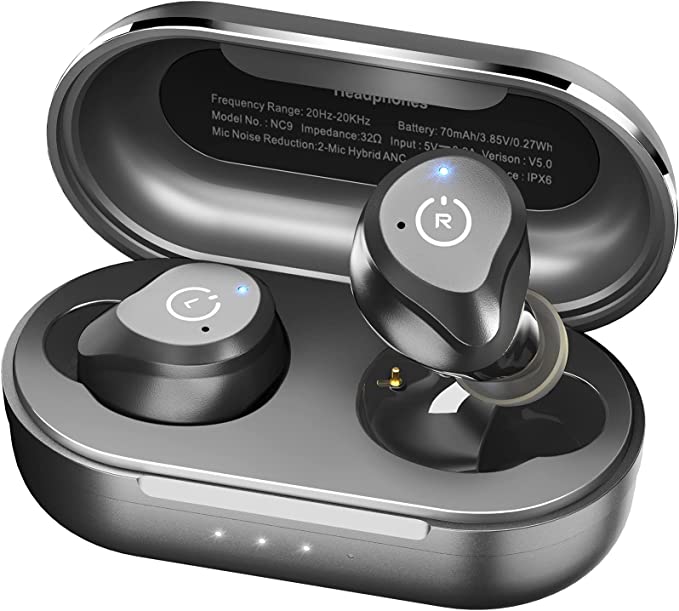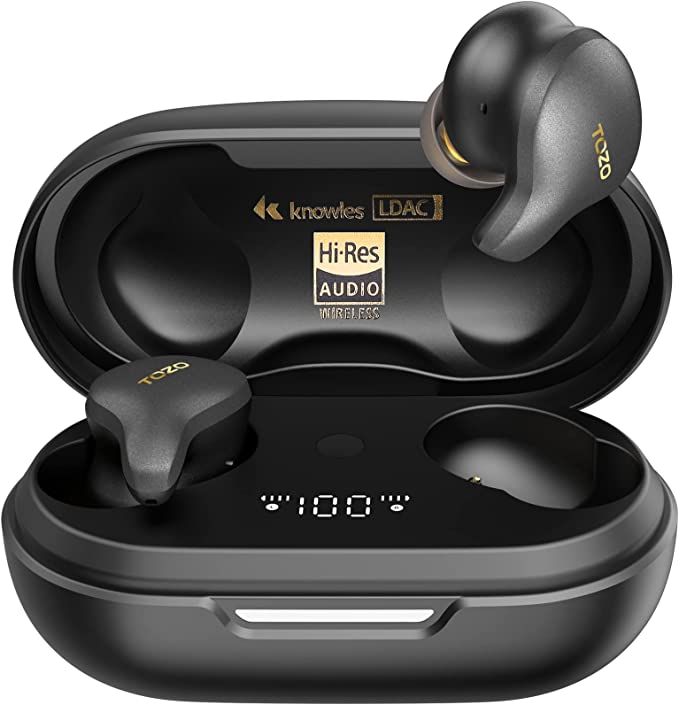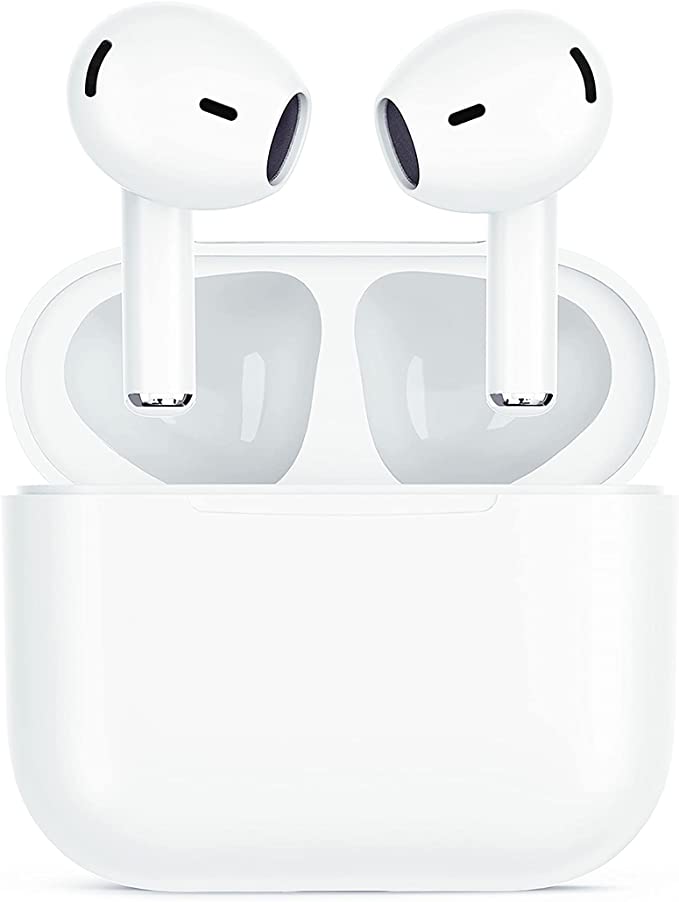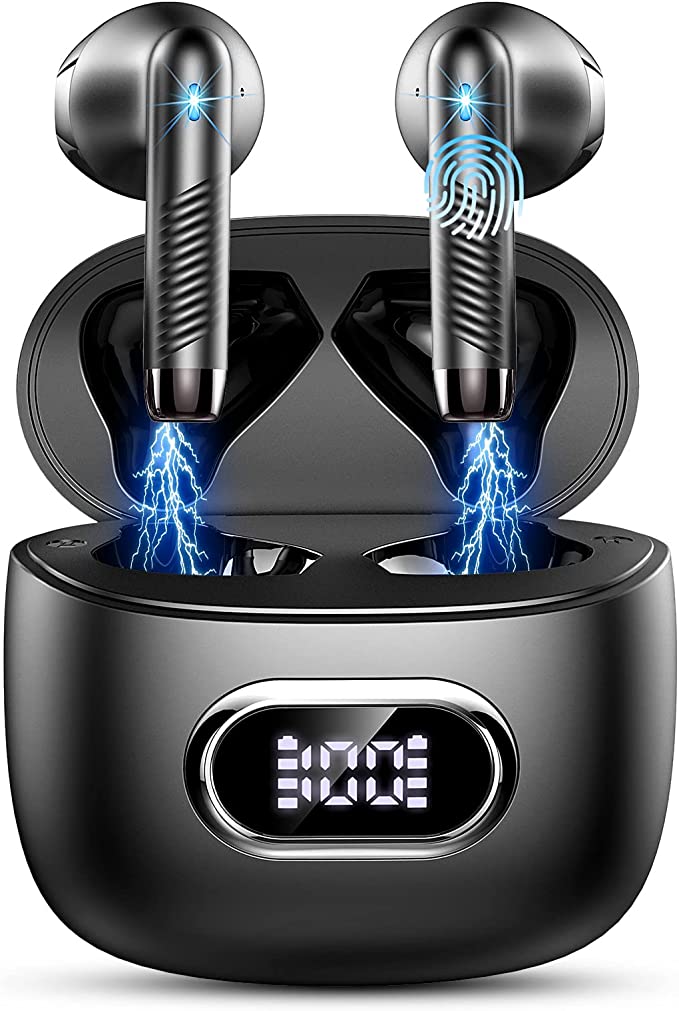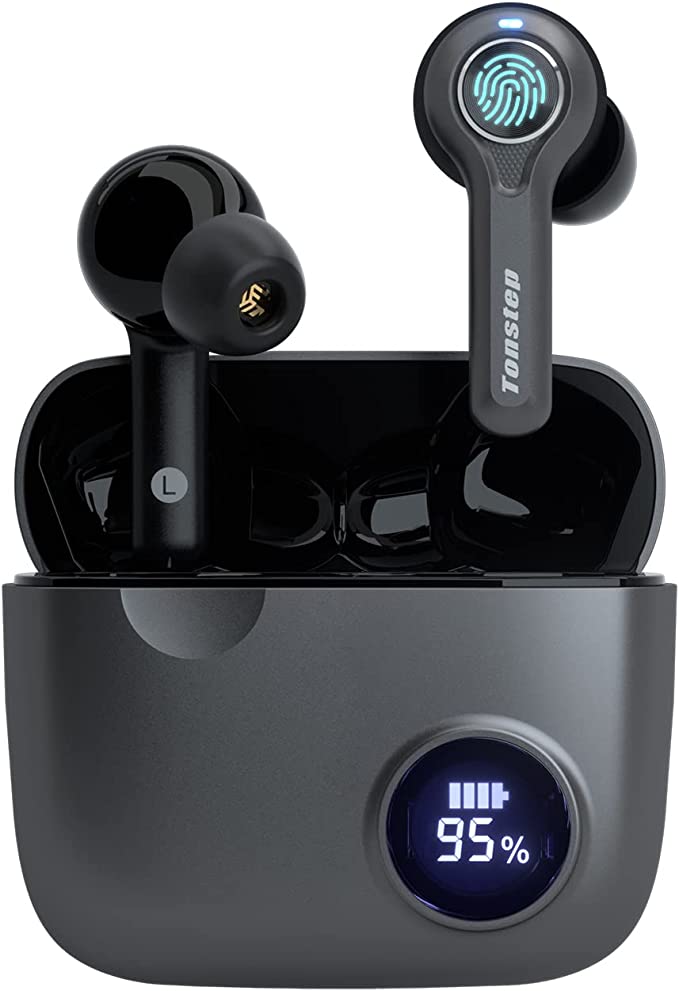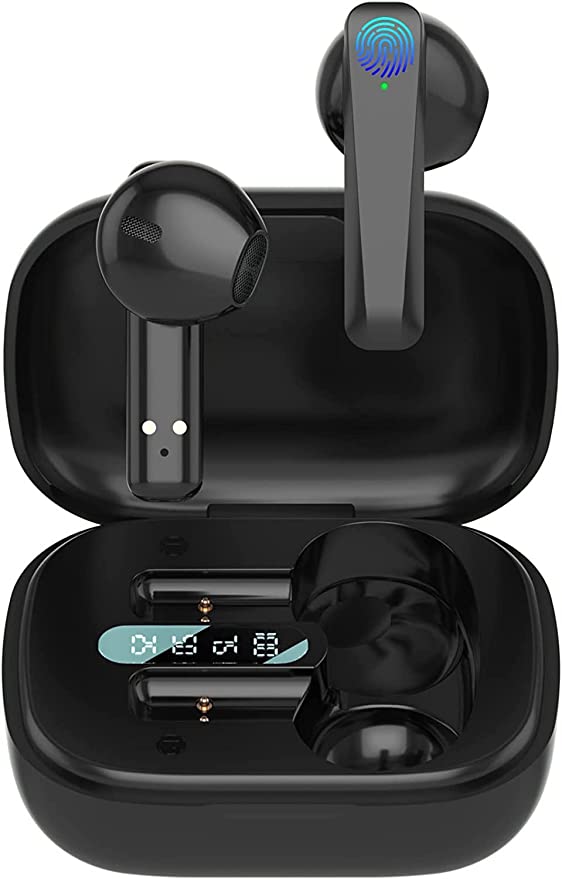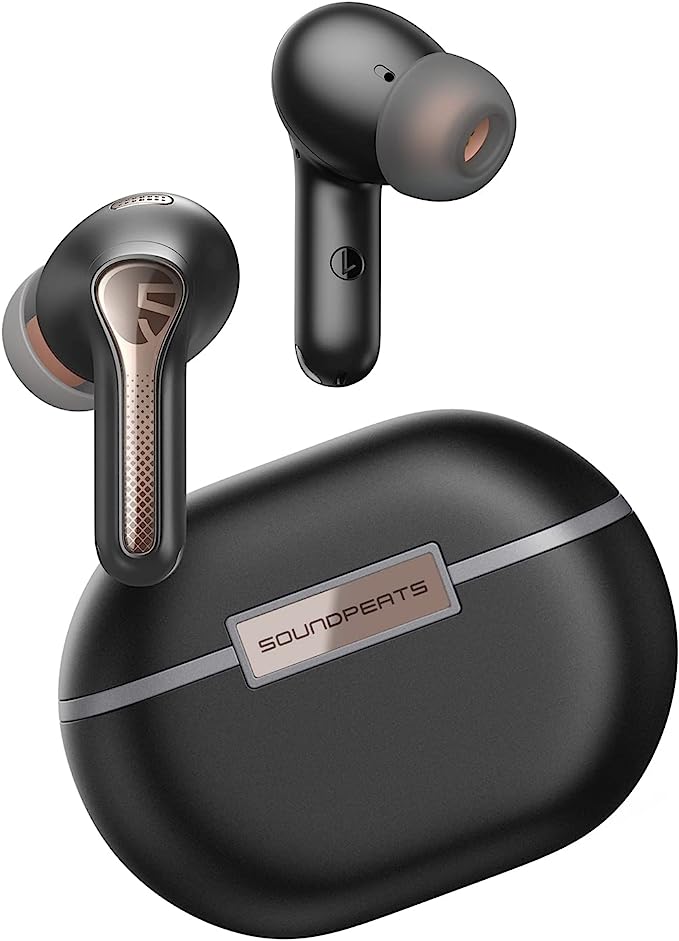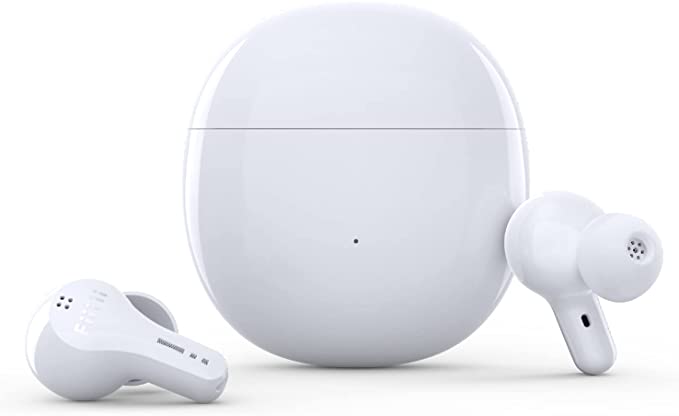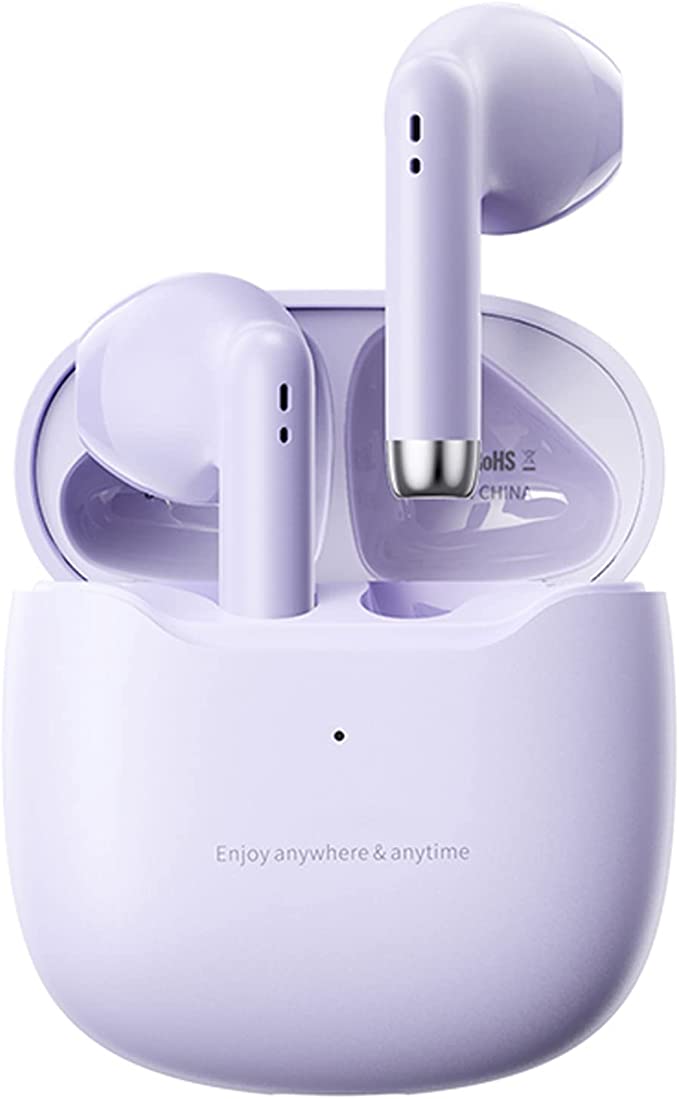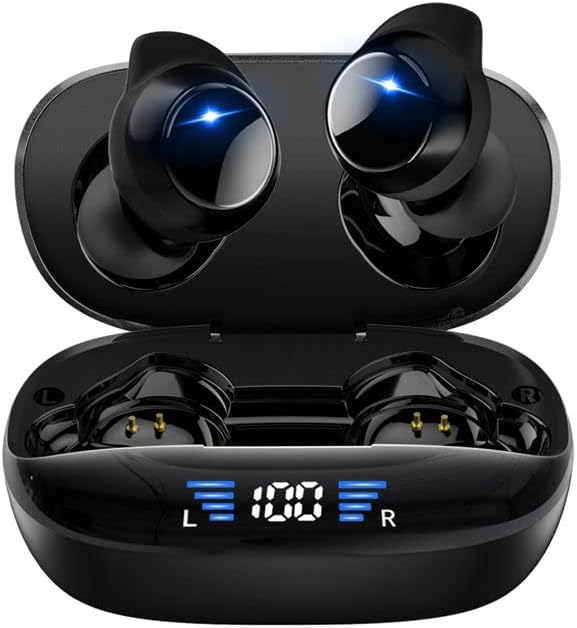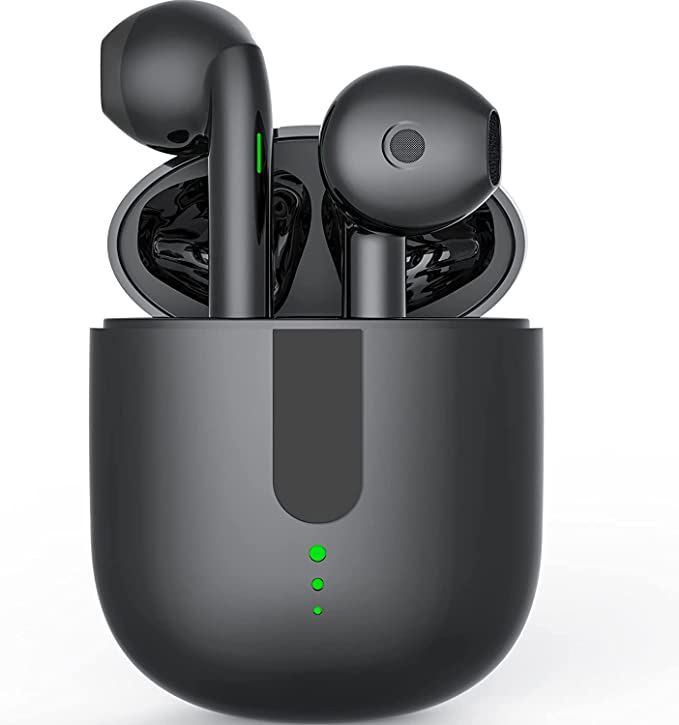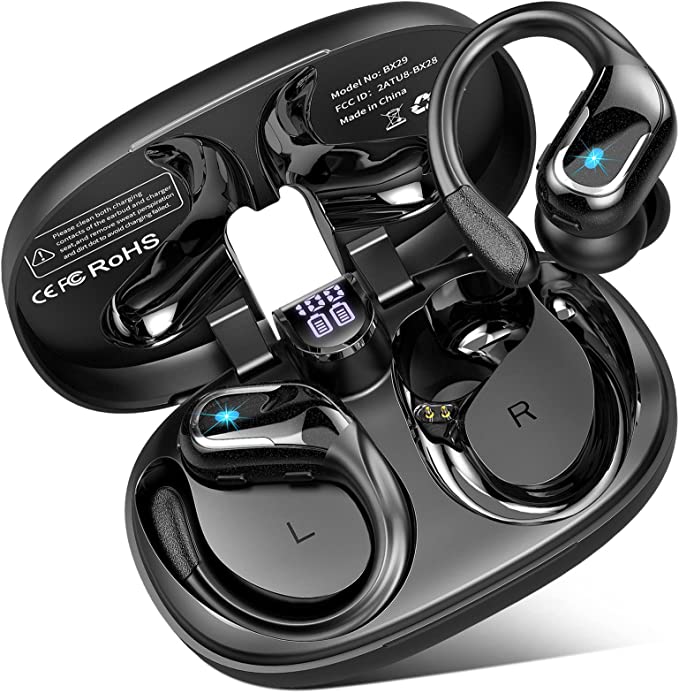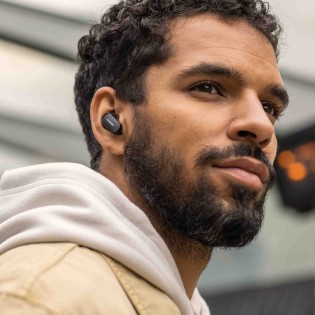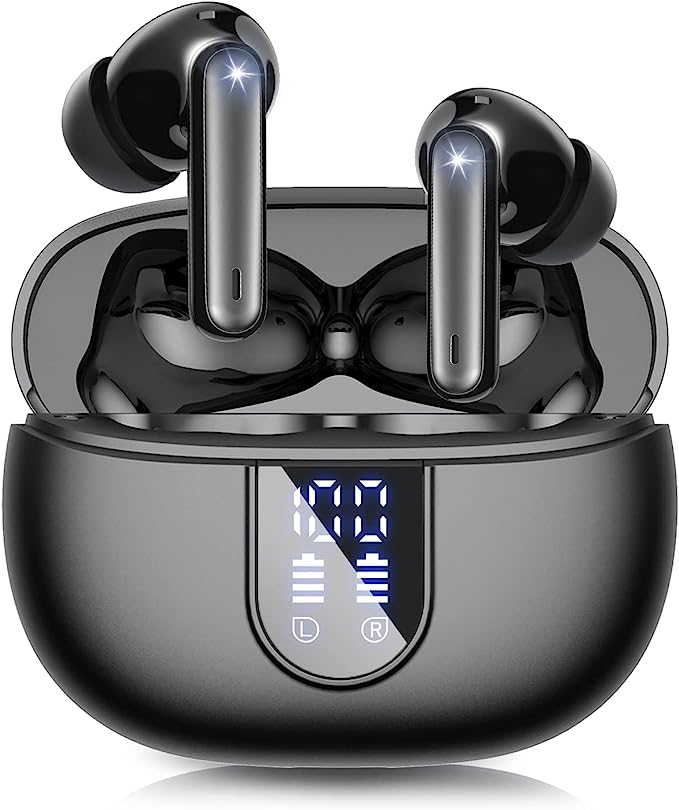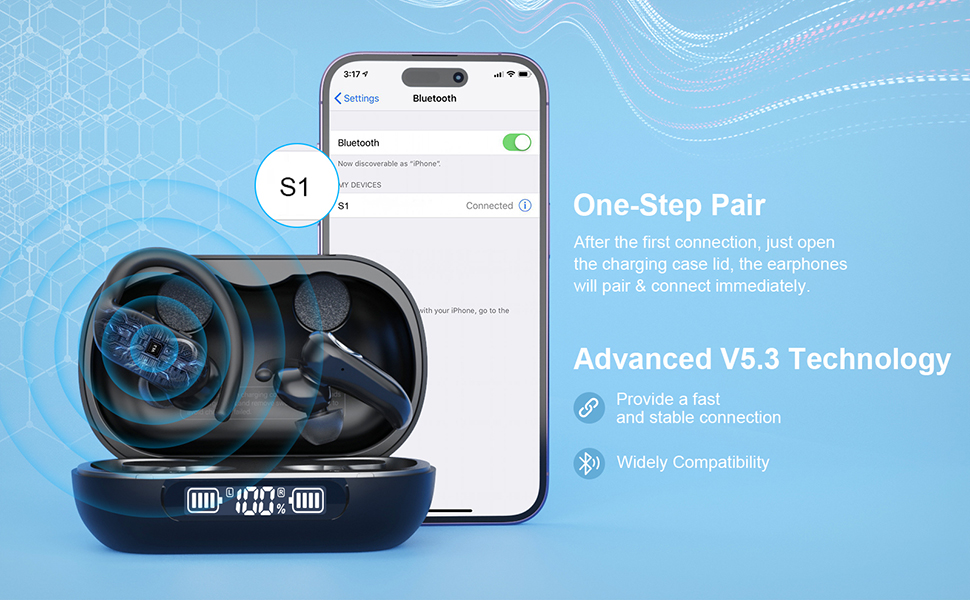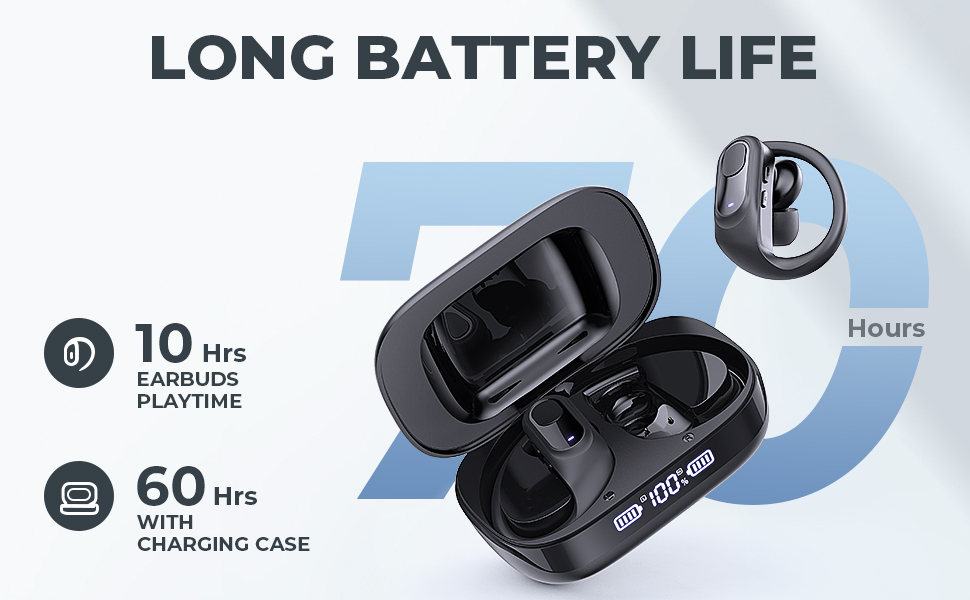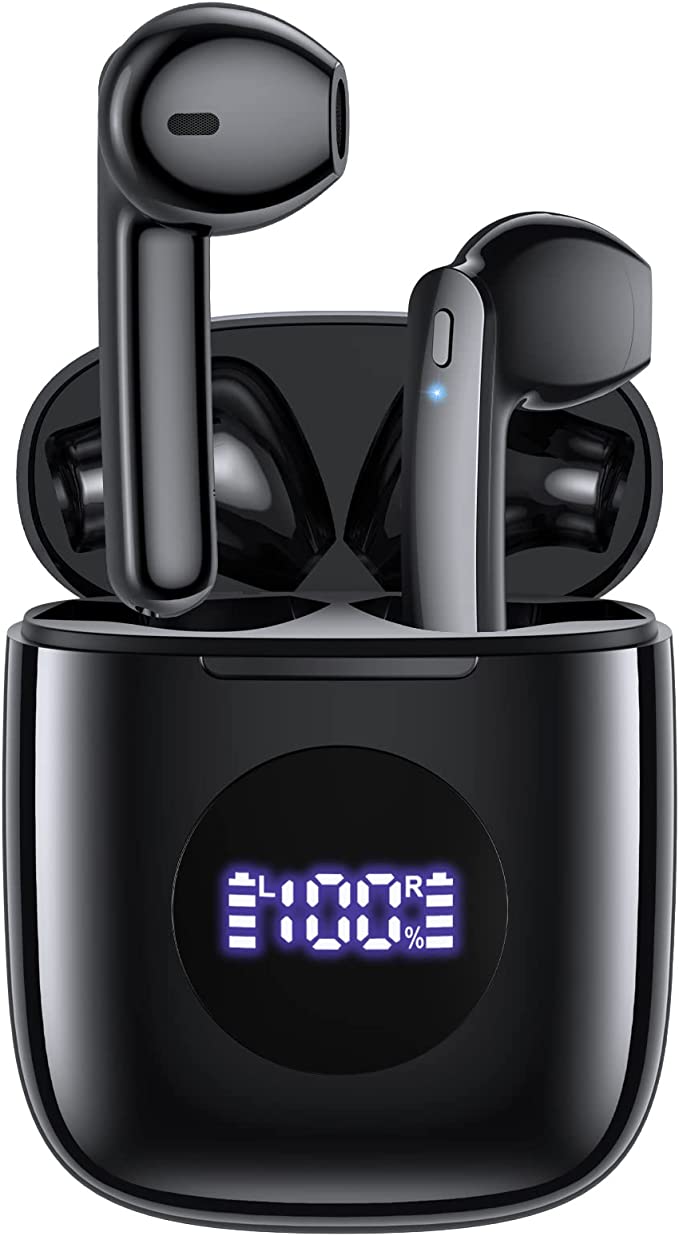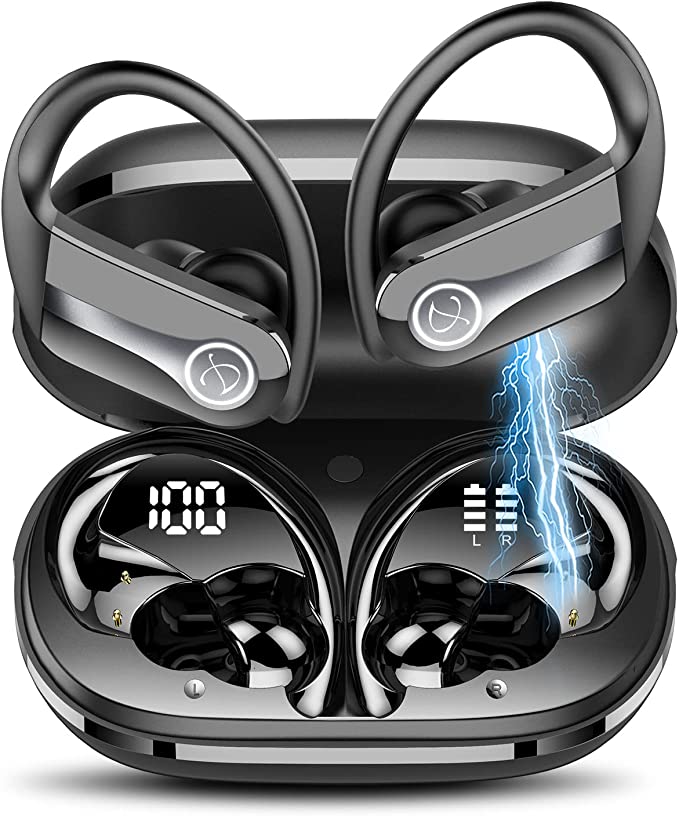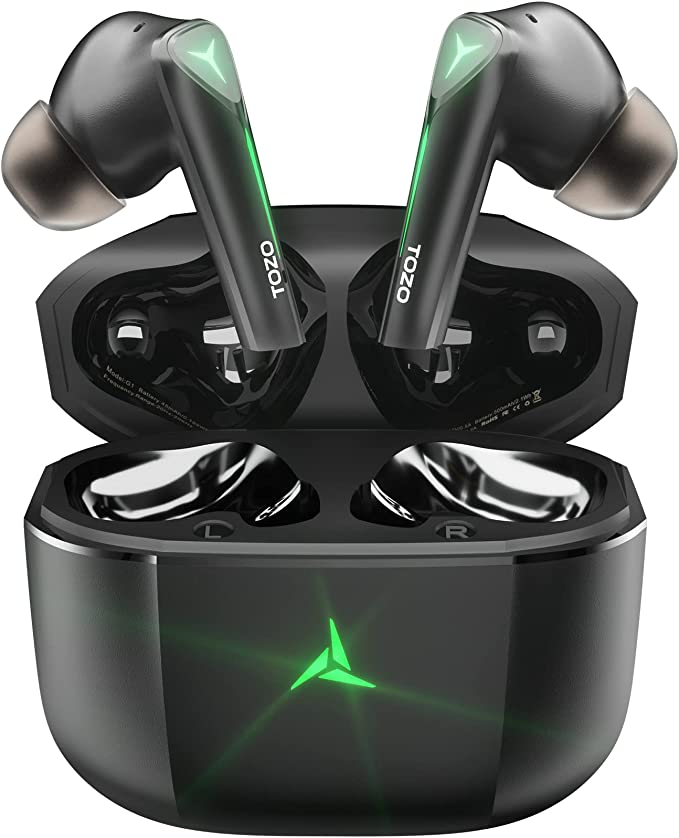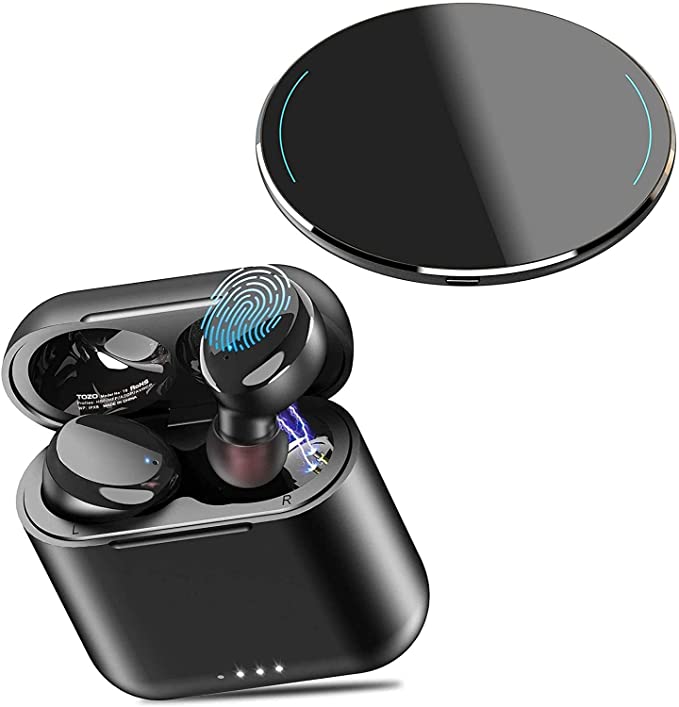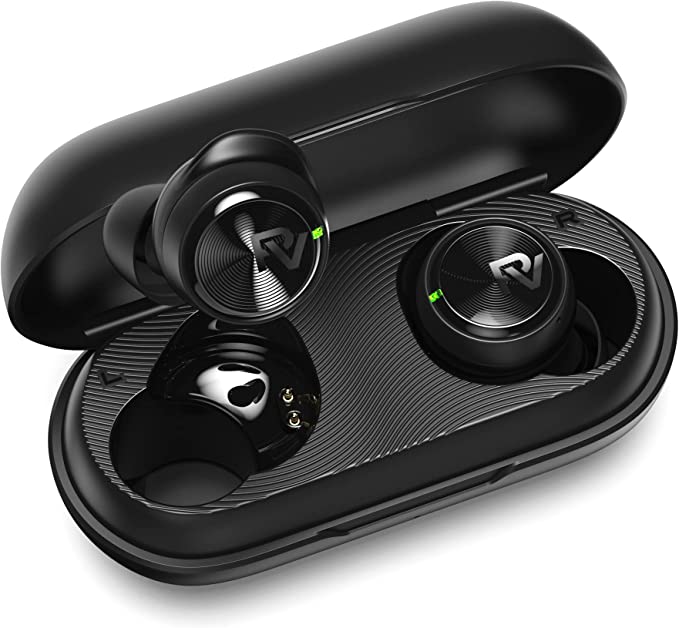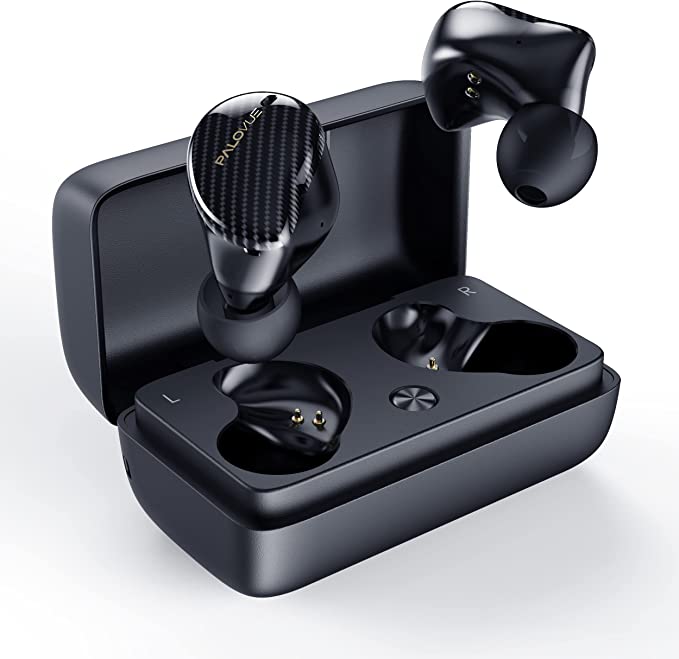Xmenha Invisible Earbuds: Unveiling the Science of Discreet Sound
Update on May 30, 2025, 4:52 p.m.
In the cacophony of modern life, the desire for a personal auditory sanctuary, a bubble of bespoke sound, has never been more potent. We crave the freedom to curate our own soundtracks, to engage with information intimately, or simply to find a pocket of tranquility, all without being tethered or overtly conspicuous. This yearning has fueled a remarkable journey in audio technology: a relentless march towards miniaturization. From the shoulder-borne boomboxes of a bygone era to the palm-sized players that followed, and now, to earbuds so diminutive they verge on invisibility, the trajectory has been clear. Yet, this pursuit of the infinitesimal is a delicate dance, a constant negotiation between shrinking physical dimensions, the unyielding laws of physics, and the nuanced complexities of human anatory and perception. It’s within this intricate interplay that devices like the Xmenha Smallest Invisible Earbuds emerge, offering themselves as a case study in the ongoing quest to make technology not just powerful, but intimately and almost imperceptibly part of our lives. Let us delve into the science that breathes life into these whisper-thin emissaries of sound.

The Unseen Conductor: Bluetooth 5.3 and the Symphony of Wireless Stability
At the core of any truly wireless earbud lies the magic of Bluetooth, a technology that has evolved from a simple cable-replacement protocol into a sophisticated conductor of our personal audio experiences. Think of it not merely as an invisible wire, but as a skilled maestro, ensuring each note, each spoken word, is delivered with precision and grace from your device to your ears. The Xmenha earbuds, according to their specifications, leverage Bluetooth 5.3. This isn’t just an incremental number; for micro-devices, such advancements are pivotal.
The Bluetooth Special Interest Group (SIG), the custodians of the standard, highlights that versions like 5.3 bring enhancements crucial for the low-power, interference-prone environments in which tiny earbuds operate. These can include improved channel classification (allowing the device to more intelligently hop between frequencies to avoid interference), better power control mechanisms (vital for eking out every possible minute from minuscule batteries), and features that streamline connections. For a device measured in millimeters, with an antenna oppervlakte to match, maintaining a robust and stable link in a pocket, a bag, or across a bustling room is a significant engineering feat. Faster pairing and a more resilient connection, as claimed by Xmenha, are direct beneficiaries of these underlying Bluetooth refinements.
Furthermore, Bluetooth is the enabler of the True Wireless Stereo (TWS) experience. This is the technological ballet where two independent earpieces, untethered from each other, receive distinct left and right audio channels, synchronizing perfectly to create a convincing stereo image. It’s a complex choreography of data transmission and timing, all orchestrated by the Bluetooth chipsets within each bud.

The Miniature Sound Engine: Deconstructing the 13mm Driver and Composite Diaphragm
The challenge intensifies when we consider sound reproduction. How do you coax rich, full-bodied audio from an enclosure barely larger than a fingertip? The answer lies in the design of the acoustic heart of the earbud: the driver. Xmenha states their earbuds house a 13mm dynamic driver. In the world of micro-audio, a 13mm diameter is relatively generous. A dynamic driver, the workhorse of most headphones and earbuds, operates on a beautifully simple principle of physics: an electrical audio signal passes through a voice coil attached to a diaphragm and suspended within a magnetic field. This causes the coil and diaphragm to vibrate rapidly, moving air and creating the sound waves our ears interpret as music or speech. Generally, a larger diaphragm surface can move more air, which often translates to a greater potential for reproducing lower frequencies (bass) with authority and achieving higher overall sound pressure levels (volume) without excessive distortion.
However, size isn’t the sole determinant of sound quality. The material and construction of the diaphragm itself are paramount. Xmenha mentions a “composite diaphragm unit.” While the specific materials in their composite are not detailed in the provided information, the general principle behind using composite materials in audio diaphragms is to achieve a blend of desirable acoustic properties that might be mutually exclusive in a single material. For instance, a diaphragm needs to be incredibly light to respond quickly to rapid changes in the audio signal (good transient response), yet stiff enough to resist flexing ângulo unwanted ways that cause distortion, especially at higher frequencies. It also needs good internal damping to prevent resonant frequencies from coloring the sound. Composite materials might combine, for example, the lightness of a polymer film with the stiffness of a specialized coating or fiber weave, aiming to deliver a balanced sound signature across the frequency spectrum – from clear highs to detailed mids and impactful bass. The ambition, as Xmenha phrases it, is to deliver “loud and crisp sound with deep bass and balanced mids,” leading to an “immersive stereo” experience, a goal that hinges on both the driver’s capability and the acoustic design of the earbud enclosure.

Silencing the Hubbub (for Your Caller): The Nuance of Environmental Noise Cancellation (ENC)
In our always-on world, clear communication is key, but background noise is an ever-present adversary to our phone calls. The Xmenha earbuds claim to address this with Environmental Noise Cancellation (ENC), facilitated by “2 mics with environmental noise reduction technology.” It’s crucial to distinguish ENC from its more famous cousin, Active Noise Cancellation (ANC). While ANC is designed to create a quieter listening experience for the wearer by actively neutralizing ambient sounds across a broad spectrum, ENC primarily focuses on improving the clarity of your voice for the person on the other end of the call.
Think of ENC as a smart filter for your outgoing audio. Typically, a dual-microphone system in an ENC setup employs one microphone positioned to best capture the user’s voice, while the second (or more) microphone is oriented to pick up the surrounding ambient sounds. Sophisticated algorithms then analyze the signals from these microphones. By comparing the voice-prominent signal with the ambient noise signal, the system can identify and attempt to suppress the unwanted background noise – the café chatter, the traffic rumble, the office din – before your voice is transmitted. This doesn’t make the world quieter for you while you’re listening to music, but it can significantly improve the intelligibility of your speech for your conversation partner. Xmenha’s implementation, using two microphones, aims to leverage this principle to deliver “crystal clear calls.”

The Disappearing Act: Ergonomics, the “Small Ear Canal,” and the Dream of Sleep-Ready Audio
The allure of “invisible” earbuds extends beyond mere aesthetics; it speaks to a desire for comfort so profound that the technology fades into the background of our sensory experience. Achieving this, especially for diverse human anatomies and challenging use-cases like sleep, is an ergonomic tightrope walk. Xmenha specifically mentions a design catering to “small ear canals” and suitability for “sleepping sleep.”
The claim of weighing only “0.1 ounces (one earbud)” is significant. In ergonomics, even fractions of an ounce can make a difference in perceived comfort over extended periods. Lighter earbuds exert less pressure on the delicate tissues of the ear and are less likely to cause fatigue or the sensation of being “dragged down.”
The “ergonomic semi in ear design” is another piece of this puzzle. Unlike deeply inserted in-ear monitors that create a tight seal within the ear canal, or outer-ear buds that simply rest on the concha, a semi-in-ear design typically aims for a shallow insertion, resting snugly at the entrance of the ear canal. This approach can offer a balance between a secure fit that’s “not easy to fall off” (as Xmenha claims) and reduced pressure within the ear canal, which some users find more comfortable for long durations.
Designing for “small ear canals” implies careful consideration of the nozzle diameter, the overall housing shape, and the selection of ear tip materials and sizes to ensure a gentle yet secure fit. The “sleep earbuds” designation introduces further complexities. For an earbud to be genuinely sleep-ready, it must not only stay in place during movement but also remain comfortable when a sleeper lies on their side, minimizing pressure points against the pillow. Material breathability and heat dissipation also become more critical during prolonged, static contact with the skin.
It’s important to acknowledge, however, that achieving a universally “perfect” fit and an unnoticeable presence is an elusive ideal in the world of mass-produced wearables. Individual ear anatomy varies tremendously. Factors such as the precise shape and angle of the ear canal, skin sensitivity, and even the micro-climate within the ear can influence comfort and stability. While thoughtful design aims to accommodate a wide range of users, the subjective experience of “invisibility” and comfort, particularly for specialized uses like sleep or for individuals with very small ear canals, can differ. Early user feedback on emerging micro-devices, including the limited dataset provided with the Xmenha product information which indicated a 2.7-star rating from 8 users with some noting discomfort, often highlights this variability as the industry continues to refine the delicate balance between miniaturization, feature integration, and individualized ergonomic success.
The Power Paradox: Fueling Feature-Rich Micro Devices
The relentless drive towards miniaturization runs headlong into one of the most fundamental constraints of modern electronics: battery life. Packing enough energy into a device that measures its existence in millimeters to power Bluetooth radios, sophisticated audio drivers, and potentially other sensors for hours on end is a formidable challenge. Xmenha states their earbuds provide “up to 4 hours of high-quality sound output on a single charge,” with the included charging case offering an additional six charges for a “total playtime of 25 hours.”
These “up to” figures are typically based on manufacturer testing under ideal conditions – moderate volume levels, stable Bluetooth connections, and often with standard audio codecs. However, the real-world vitality of such tiny batteries is influenced by a multitude of variables. Higher listening volumes demand more power. A weaker Bluetooth signal might cause the radio to work harder, consuming more energy. Active features, even something as seemingly simple as touch controls if they keep a sensor active, can contribute to drain. Even ambient temperature can affect battery performance and longevity.
The industry is continually making strides in battery chemistry (primarily lithium-ion and its variants for such devices), power management integrated circuits (PMICs), and the energy efficiency of components like Bluetooth chipsets. Yet, the user experience spectrum for battery life in ultra-compact electronics can be broad. While manufacturers strive for consistency, it’s not uncommon for early adopters of new micro-devices to observe variations from claimed maximums, a testament to the ongoing engineering efforts to resolve this power paradox. The aforementioned limited user dataset for the Xmenha product, for instance, included a comment about experiencing only two hours of playback, underscoring this potential for variability.
Braving the Elements (or a Workout): The IPX6 Water Resistance Standard
For earbuds designed to accompany us through the rigors of daily life, including workouts or unexpected downpours, some level of protection against the elements is essential. Xmenha specifies an IPX6 water-resistance rating for their earbuds. To understand what this means, we turn to the Ingress Protection (IP) rating system, an international standard (IEC 60529).
The “IP” is followed by two digits (or an “X” if not rated for a particular aspect). The first digit signifies protection against solid particle ingress (like dust), and the second digit indicates protection against liquid ingress. In “IPX6”: * The “X” means the earbuds have not been specifically rated for dust protection under this standard. * The “6” signifies a high level of water protection: the earbuds are protected against powerful water jets from any direction. This is typically tested by subjecting the device to water projected at 100 liters per minute from a 12.5 mm nozzle from a distance of 3 meters for at least 3 minutes.
Practically, an IPX6 rating means the earbuds should comfortably withstand sweat during intense exercise, being caught in heavy rain, or even an accidental splash from a faucet. However, it’s crucial to understand its limitations: IPX6 does not mean the earbuds are waterproof enough to be submerged in water (that would typically require an IPX7 or IPX8 rating). So, while they’re robust for most everyday encounters with moisture, swimming with them or dropping them in a puddle would be ill-advised.
Beyond the Core Tech: Interaction and the Out-of-Box Experience
The sophistication of an earbud also lies in its ease of use. The Xmenha earbuds feature “Touch control,” a common and generally convenient method for managing playback, calls, and volume without needing to reach for the source device. Capacitive touch sensors embedded beneath the earbud’s surface detect the user’s taps and gestures, translating them into commands.
However, even the most advanced features can be rendered frustrating if the initial setup and learning curve are fraught with difficulty. While not a “feature” in the technical sense, the user manual and overall out-of-box experience play a pivotal role. A clear, concise, and easily understandable user manual, available in the user’s native language, is fundamental for any technology product. It empowers users to quickly grasp the functionalities, troubleshoot minor issues, and ultimately, derive the maximum benefit from their purchase. This aspect of user experience, though often overlooked in technical discussions, is a cornerstone of customer satisfaction. The source data for the Xmenha product included a user comment about instructions being in a foreign language, highlighting how critical this seemingly simple element can be.
Harmonizing with Health: A Gentle Reminder on Safe Listening
The incredible convenience and immersive potential of modern personal audio devices, especially those designed to be worn for extended periods or even during sleep, come with a responsibility: the protection of our hearing. Our auditory system is a delicate and irreplaceable gift. Prolonged exposure to loud sounds, regardless of their source, can lead to noise-induced hearing loss (NIHL), a condition that is often gradual, painless, but permanent.
Health organizations like the World Health Organization (WHO) provide guidelines for safe listening. A commonly cited recommendation is the “60/60 rule”: listen at no more than 60% of the device’s maximum volume for no more than 60 minutes at a time, followed by a rest period for your ears. While “invisible” or sleep–designated earbuds might tempt users into longer, more continuous listening sessions, the same principles of moderation apply. Being mindful of volume levels, taking regular auditory breaks, and being aware of the overall “dose” of sound exposure throughout the day are crucial habits for preserving hearing health in an increasingly sound-saturated world.
Coda: The Unfinished Symphony of Micro Audio
The journey into the heart of micro earbuds like the Xmenha Smallest Invisible reveals a fascinating tapestry of intricate engineering, scientific principles, and the perpetual quest to reconcile technological ambition with the human experience. It’s a grand balancing act where designers and engineers meticulously weigh the trade-offs between diminutive size, acoustic performance, wearer comfort, battery endurance, integrated features, and, ultimately, cost. Each claimed feature, from the specifics of a Bluetooth version to the diameter of a driver or the promise of noise cancellation, represents a series of complex decisions and compromises.
The path forward for micro audio is vibrant with potential. We can anticipate further leaps in battery density, allowing for even smaller devices with longer playtimes. Materials science will undoubtedly yield new diaphragm compositions and more biocompatible, comfortable housing materials. Artificial intelligence is poised to offer increasingly sophisticated audio personalization, adapting sound signatures and noise cancellation profiles to individual ears and dynamic environments. The integration of biometric sensors for health and wellness tracking within these tiny in-ear platforms is also an exciting frontier.
However, as technology becomes ever more integrated into the fabric of our lives, almost to the point of sensory extension, the human element remains paramount. The ultimate success of any such device lies not just in its technical specifications, but in its ability to reliably, comfortably, and intuitively enhance our ability to connect, to learn, to find joy, or to simply exist peacefully within our chosen soundscape.
